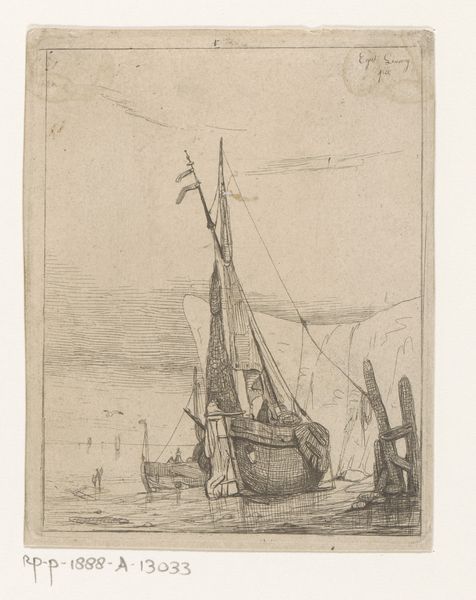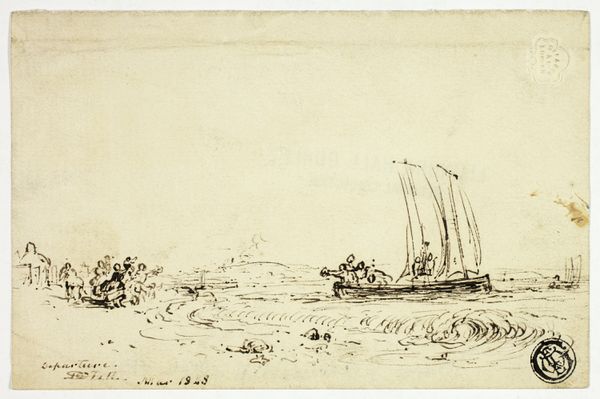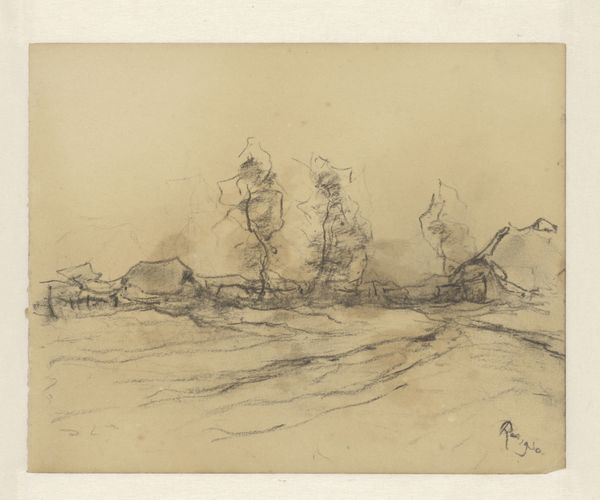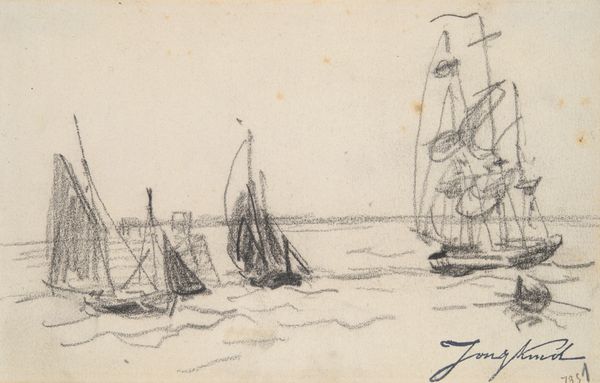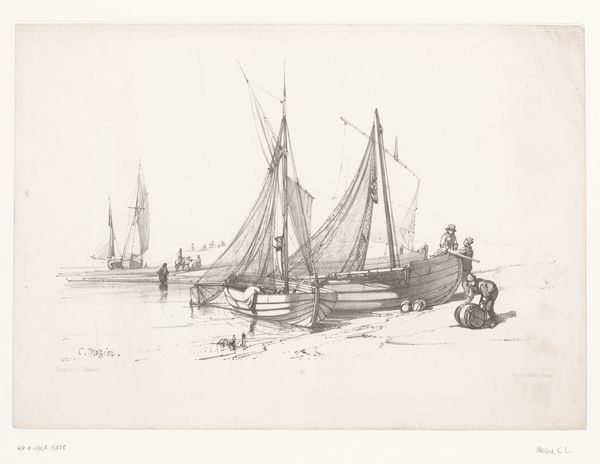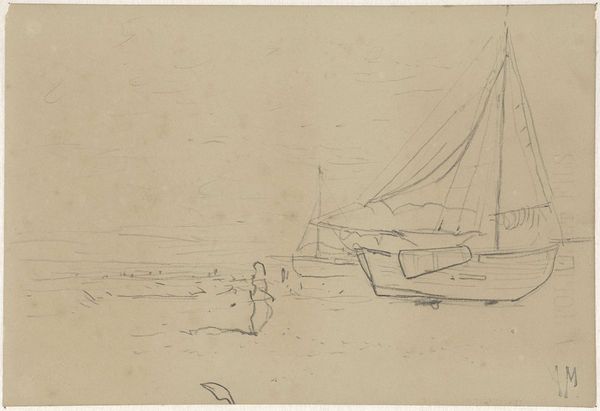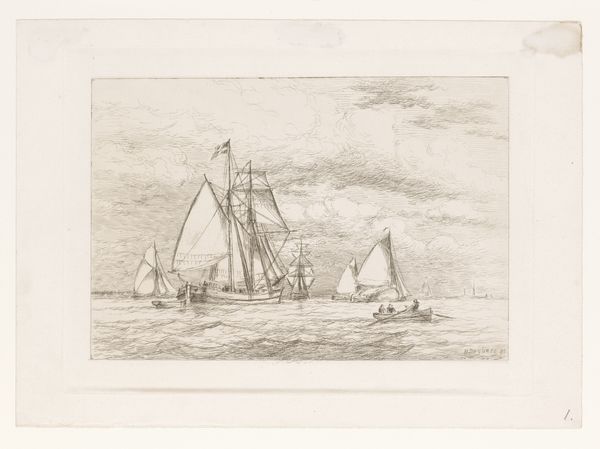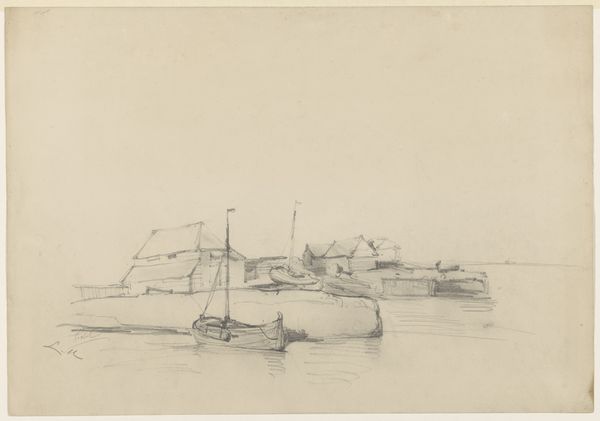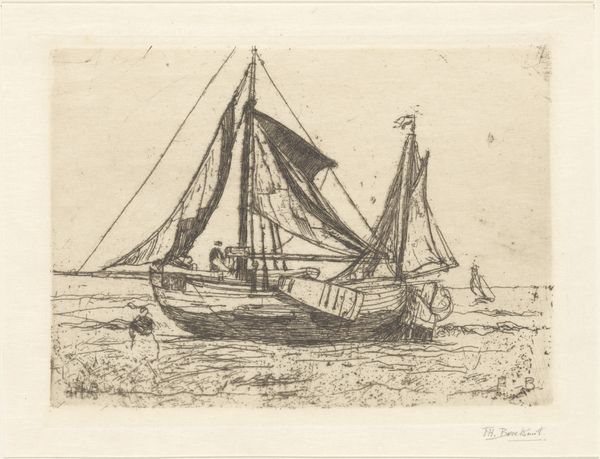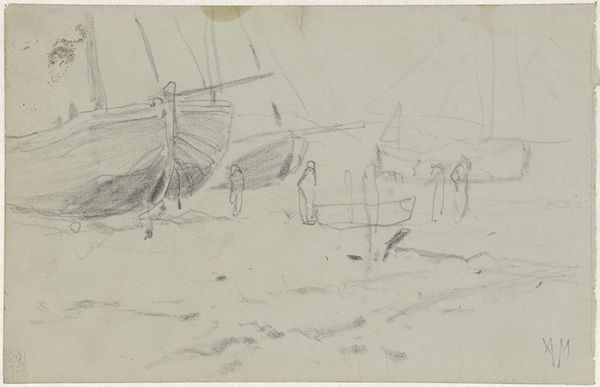
drawing, pencil
#
drawing
#
pencil sketch
#
landscape
#
figuration
#
pencil
Dimensions: 140 mm (height) x 215 mm (width) (bladmaal)
Editor: This is "Motiv fra et østgrønlandsk sagn," a pencil drawing from 1927-28 by Kaarale Andreassen, held here at the SMK. It feels sparse and bleak, almost dreamlike. How do you interpret this work? Curator: Given its title, we need to look beyond just the surface level, to consider what this "Eastern Greenlandic saga" might tell us about cultural identity and narrative traditions in that region. What sagas were circulating at that time, and how might Andreassen be interpreting them for a contemporary audience, through this piece held now in a Danish museum? Editor: So the drawing acts almost as a historical document itself? Curator: Precisely. Art is never created in a vacuum. The choice of subject matter, the stark landscape, and the implied narrative all speak to a specific moment of cultural self-representation, potentially negotiating the relationship between Greenlandic identity and Danish influence. What does the apparent simplicity, the sketchy execution suggest about how this narrative might be understood publicly? Editor: Perhaps its simplicity makes it more accessible, focusing on the universal elements of storytelling rather than specific historical details? Curator: That's certainly possible. Or, one could ask: Does the drawing simplify a rich and nuanced narrative tradition, and to what end? Andreassen could be trying to introduce that to new audiences or responding to particular notions about what Greenlandic culture should or does represent. Editor: I hadn't thought about it like that before. It makes you consider who this was made for and what it's trying to say about the culture it depicts. Curator: Exactly. And that's how we can move beyond the visual appeal and explore the deeper social and political layers embedded in a piece like this. It gives real meaning to both the making of the piece and what it has to say today, for example, placed in a Danish museum.
Comments
No comments
Be the first to comment and join the conversation on the ultimate creative platform.


